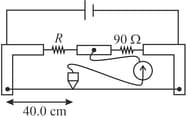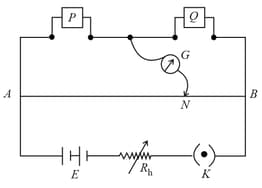The figure shows a meter-bridge circuit with resistors and The jockey is at the null point. If end corrections at left and right ends are and respectively, find the balancing length from point .
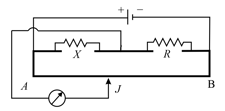
Important Questions on Current Electricity
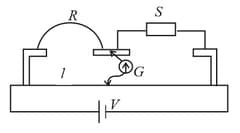
Consider a long wire as shown in the figure. The galvanometer jockey is placed at on at a distance from . The galvanometer shows zero deflection.
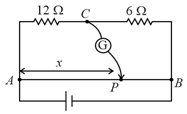
The value of , to the nearest integer, is
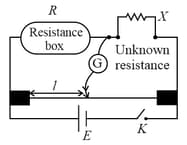
| S. No. | ||
|---|---|---|
1. 2. 3. 4. |
Which of the reading is inconsistent?
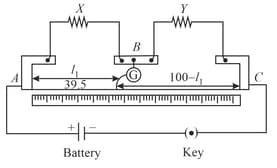
What is end error in a metre bridge? How is it overcome? The resistances in the two arms of the metre bridge are and respectively.
When the resistance is shunted with an equal resistance, the new balance length found to be , where is the initial balancing length. Calculate the value of .
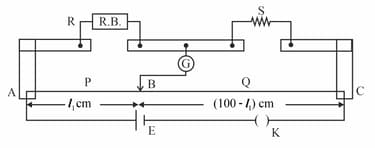
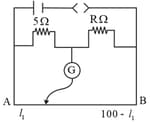
In the given arrangement of experiment on metre bridge, if corresponding to null deflection of the galvanometer is , what would be its value if the radius of the wire is doubled?
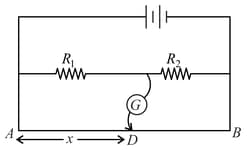
In a meter bridge, the wire of length has a non-uniform cross-section such that, the variation of its resistance with length is Two equal resistances are connected as shown in the figure. The galvanometer has zero deflection when the jockey is at point What is the length
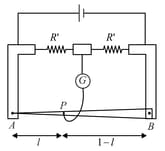
In order to measure the internal resistance of a cell of emf a meter bridge of wire resistance , a resistance , another cell of emf (internal resistance ) and a galvanometer are used in a circuit, as shown in the figure. If the null point is found at then the value of
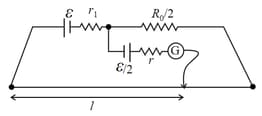
During an experiment with a metre bridge, the galvanometer shows a null point when the jockey is pressed at using a standard resistance of ,as shown in the figure. The least count of the scale used in the metre bridge is . The unknown resistance is
